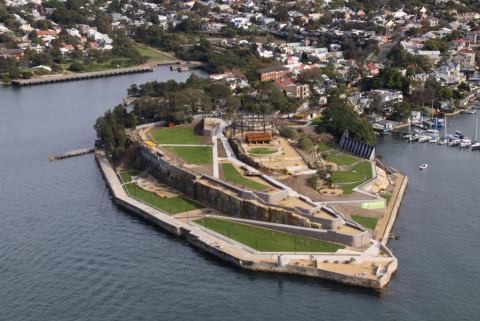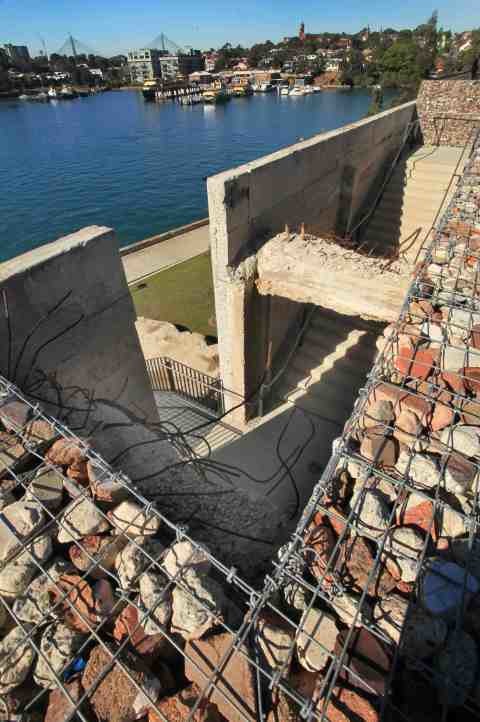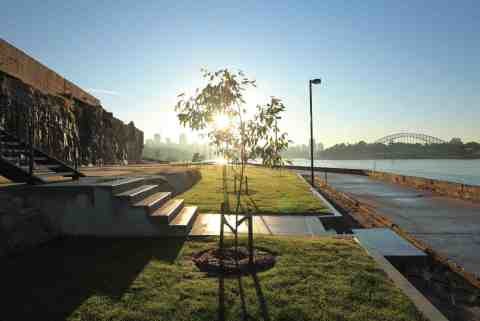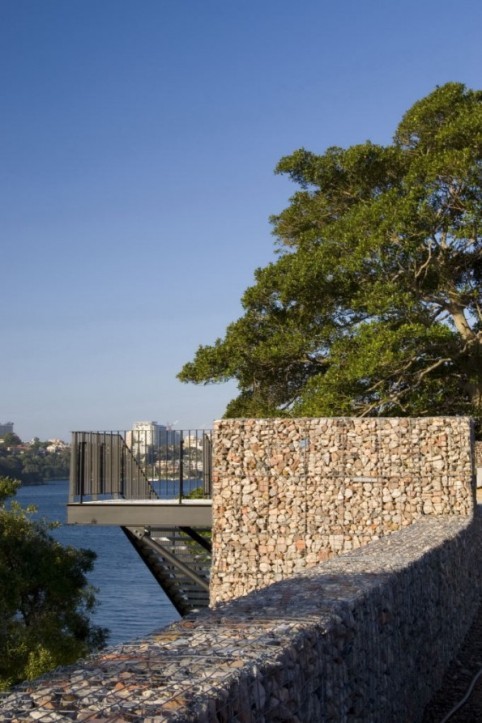A new park on one of Sydney’s most historic harbourside sites has been judged Australia’s best public urban landscape project.
Ballast Point Park was named Best Overall Project at the 2011 Public Domain Awards, hosted by industry association Cement Concrete & Aggregates Australia (CCAA).
Designed by landscape architects McGregor Coxall for the Sydney Harbour Foreshore Authority, the winning project was also named Best Project for NSW and winner of both the national Precincts and Sustainable Design categories.
 Ballast Point Park Photos: Christian Borchert
Ballast Point Park Photos: Christian Borchert
Situated on the old Caltex site at Birchgrove, Ballast Point Park successfully weaves together different strands of the site’s history - as an oil storage facility, a ballast quarry for visiting ships, the location of one of Sydney’s earliest and grandest harbourside villas, and a place of significance to Sydney’s traditional landowners - using both recycled and new materials, including concrete.
Much of the remnant concrete from the old site was taken away, treated and returned as fill for the distinctive ‘rock cage’ retaining walls that characterise the Park.

The design also incorporates elements of the weathered facades, exposed aggregates and protruding reinforcing rods of the old concrete buildings and structures that were left behind on the site.
“We wanted to achieve a balance between the old and new, with each part providing a layer of the story,” says Philip Coxall, of McGregor Coxall.
Alongside the recycled concrete and stone elements are new concrete forms - in-situ concrete pathways and stairs, off-form walls, seating steps and toilet block walls, and various precast elements.
It’s the second time in a row that a Sydney harbourside park has won the top prize in the Public Domain Awards, with Pirrama Park at nearby Pyrmont awarded Best Overall Project in 2009.

The national Public Domain Awards are hosted by CCAA every two years to recognise the innovative and functional use of concrete to enhance the public domain.

Other State winners in this year’s Awards were:
Vic - North Melbourne Station submitted by Cox Architecture
ACT - National Service Memorial and Australian War Memorial Eastern Precinct Project submitted by Johnson Pilton Walker
Qld - Ipswich Justice Precinct submitted by Cox Rayner Architecture
WA - Beachside Leighton, Terrace, North Fremantle submitted by spaceagency
SA - Gallipoli Underpass, Adelaide submitted by HASSELL
Tas - KingstonPrimary School playground artwork submitted by Watermark Design
Category Winners were:
Paths — Elwood Foreshore submitted by ASPECT Studios
Precincts — BallastPoint Park submitted by McGregor Coxall
Walls — Ipswich Justice Precinct submitted by Cox Rayner Architects
Bridges — North Melbourne Station submitted by Cox Architecture
Public Artworks — Ipswich Justice Precinct submitted by Cox Rayner Architects
Sustainable Design — Ballast PointPark submitted by McGregor Coxall
Commended entries were:
Streets - The Oracle submitted by PLACE Design Group
Paths — Bali Memorial Link submitted by Phillips Marler, Mirrabooka Town Square submitted by AECOM in partnership with City of Stirling, and Broadwater Parklands submitted by AECOM and Gold Coast City Council
Precincts — National Service Memorial and AWM Eastern Precinct submitted by Johnson Pilton Walker, Cairns Cruise Liner Terminal submitted by Cardno, and Broadwater Parklands submitted by AECOM and Gold Coast City Council
Walls — Beachside Leighton Terrace submitted by spaceagency, The Ecovillage at Currumbin submitted by Landmatters, and Gallipoli Underpass submitted by Hassell.
Bridges — Gateway Upgrade Project submitted by Leighton Abigroup
Public Artworks — Kingston Primary School submitted by Watermark Design, Recombinant Form 1-V11 (Terrain Generator) submitted by SMLWORLD, and Port Hedland Entry Statement submitted by Scapeism
Sustainable Design — SugarmillPark, Riverstone Crossing submitted by Cardno S.P.L.A.T
The 2011 Public Domain Awards were judged by an eminent panel of landscape and design architects, headed by Professor Catherin Bull of the University of Melbourne. Other jury members were Professor Philip Follent, the head of the school of architecture at Bond University and until recently Queensland’s first full-time Government Architect, and WA-based landscape architect and urban designer, Tony Blackwell.
Entries were judged on functional performance, aesthetics, economy, durability, construction, traffic management or calming (where appropriate), sustainability, and the overall significance of the works in relation to the public domain.

